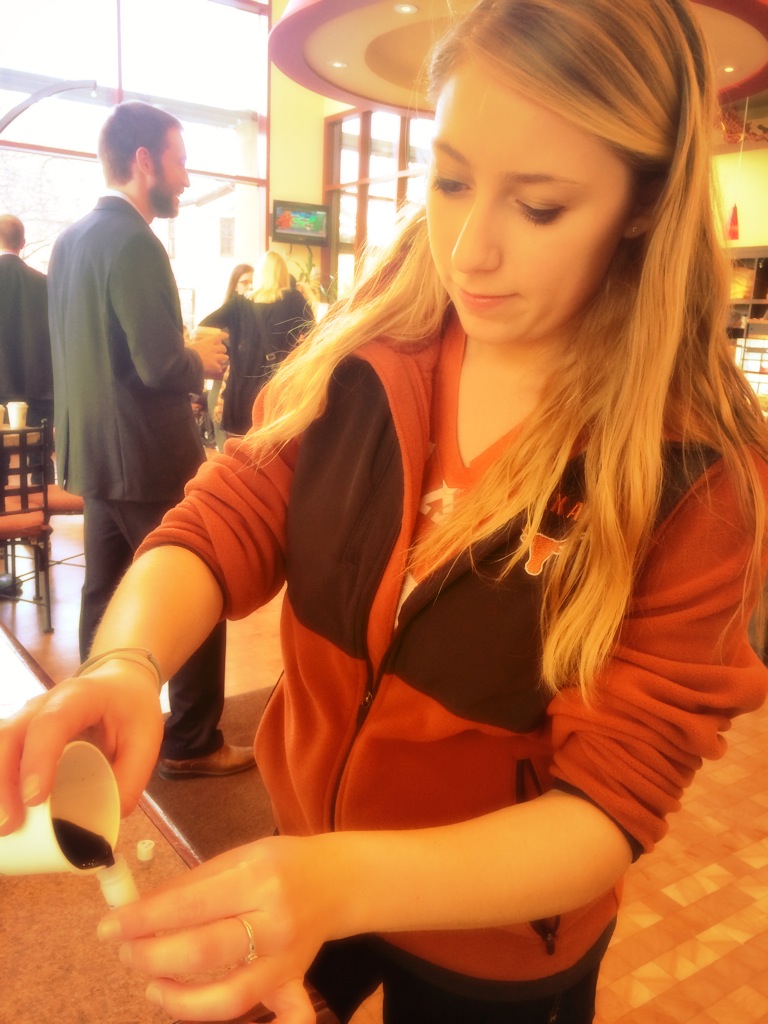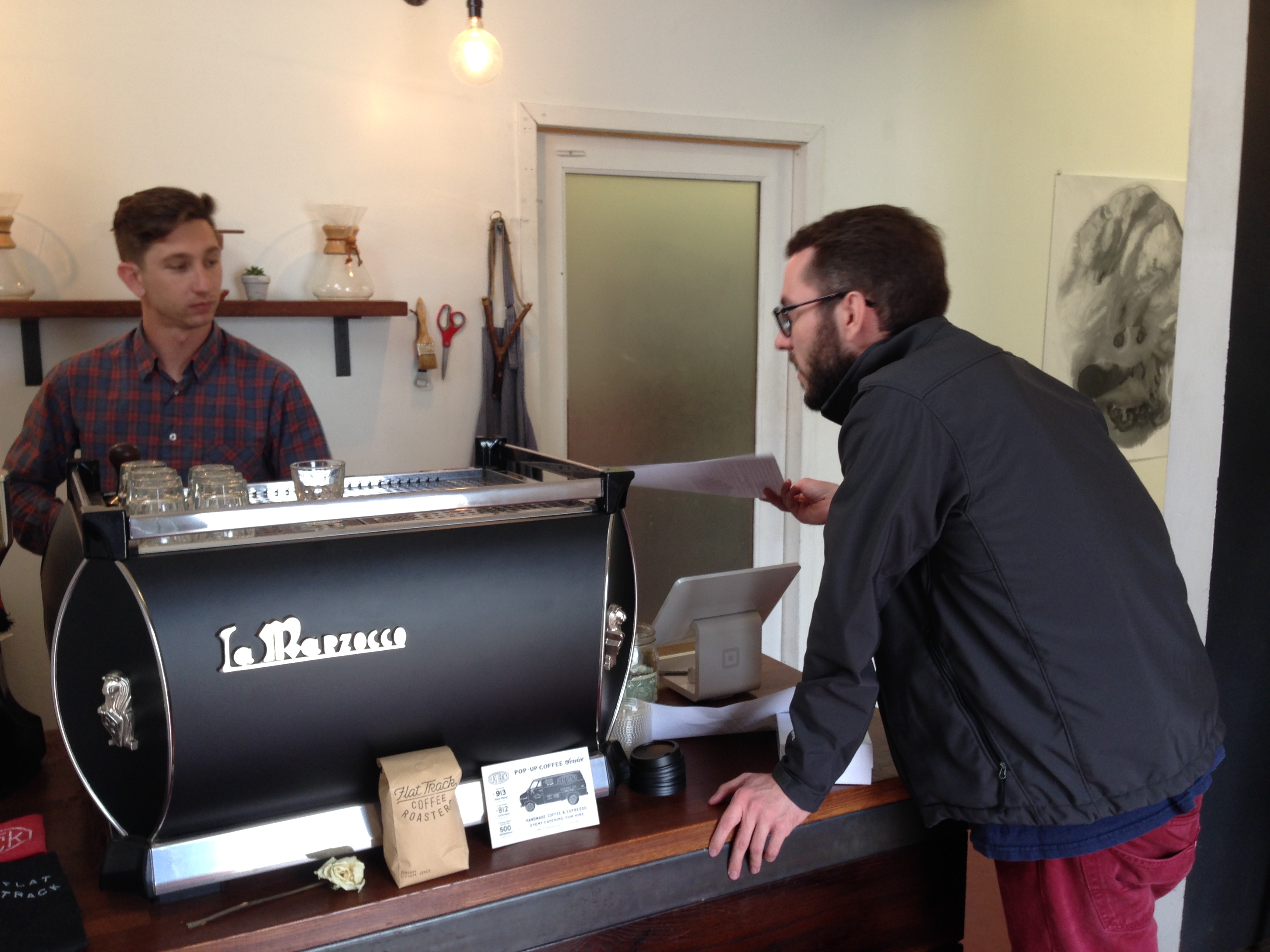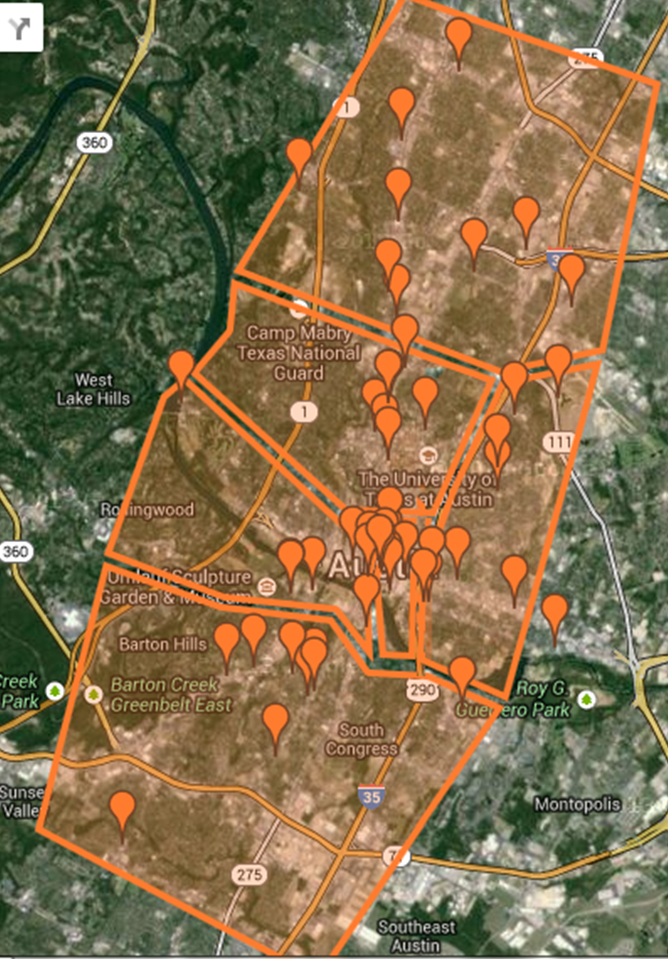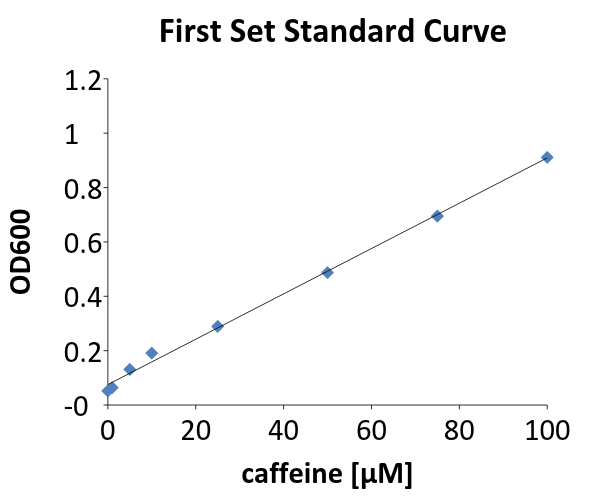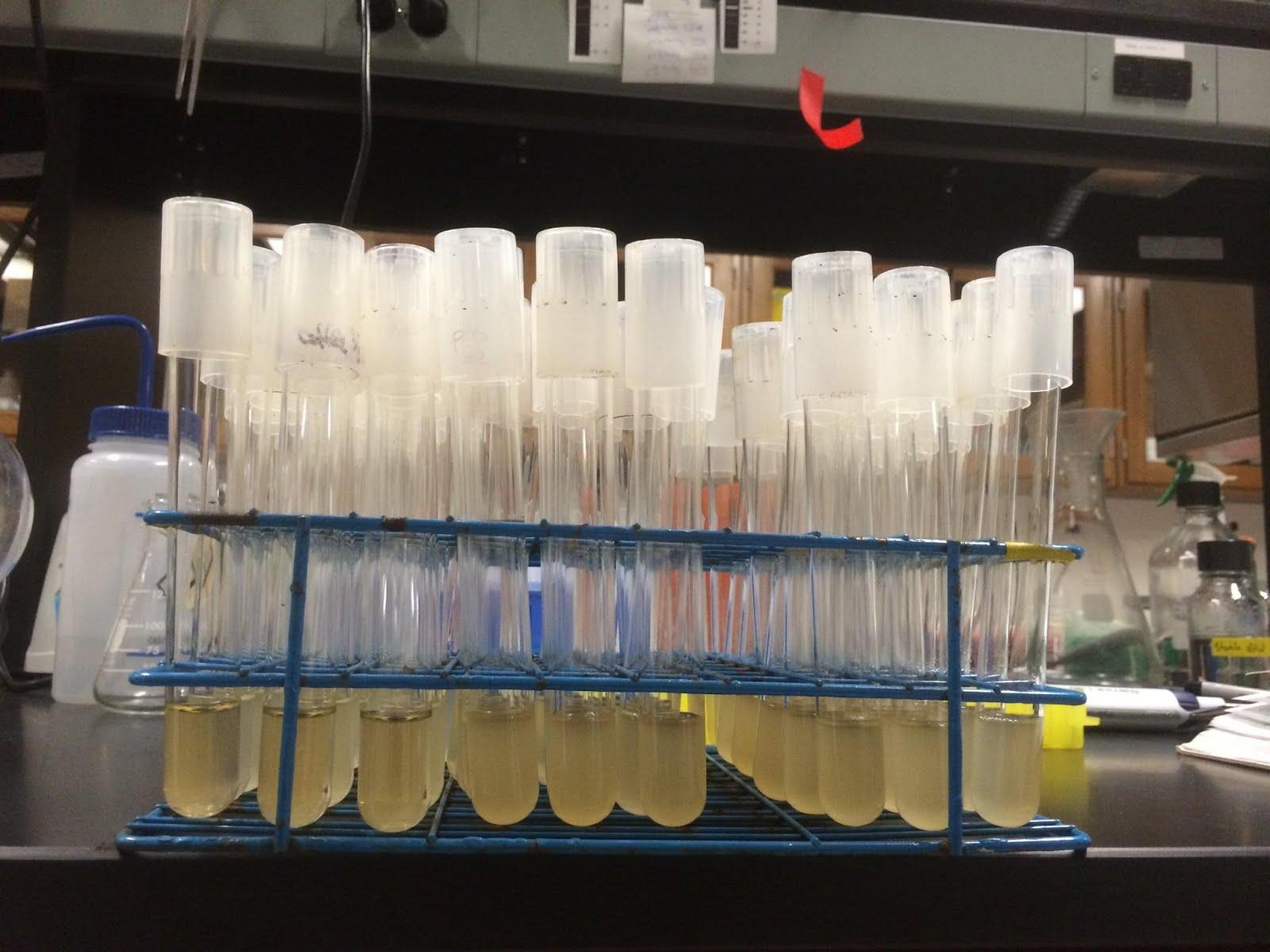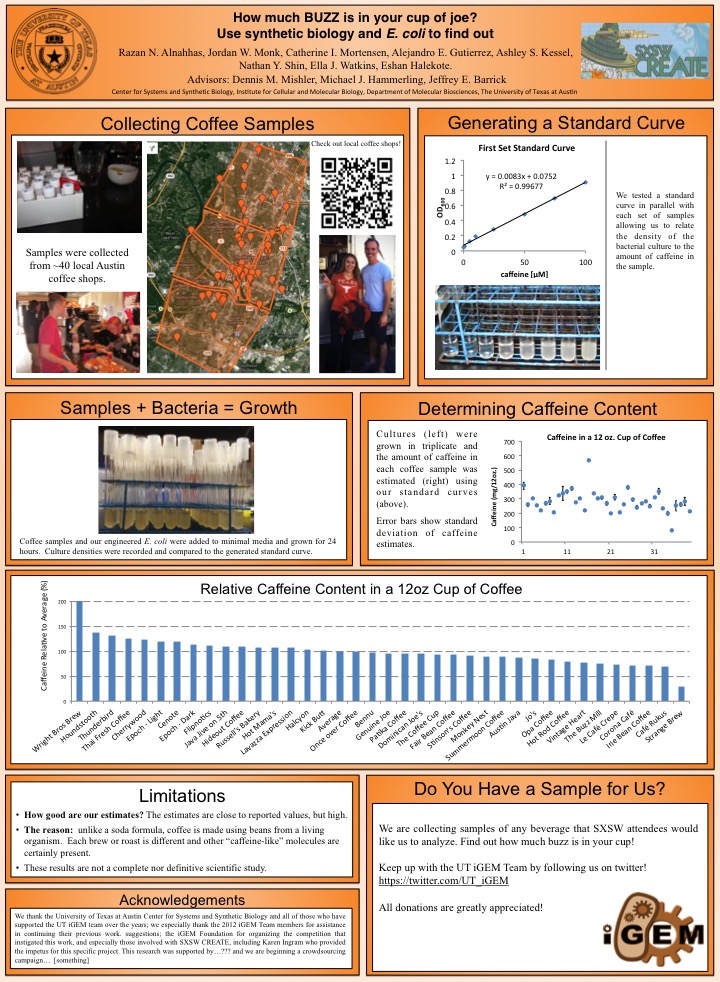Team:Austin Texas/human practices
From 2014.igem.org
(→Caffeinated Coli) |
(→Caffeinated Coli) |
||
| Line 72: | Line 72: | ||
[[file:Ellacollectscoffee.JPG|thumb|right| Ella collecting coffee sample from Austin Java]] | [[file:Ellacollectscoffee.JPG|thumb|right| Ella collecting coffee sample from Austin Java]] | ||
| - | In 2014, the UT Austin iGEM team was asked to create a presentation for the [http://sxsw.com/exhibitions/sxsw-create/participants-2014 South By Southwest (SXSW) 2014 Create event]. The SXSW festival is an annually held | + | In 2014, the UT Austin iGEM team was asked to create a presentation for the [http://sxsw.com/exhibitions/sxsw-create/participants-2014 South By Southwest (SXSW) 2014 Create event]. The SXSW festival is an annually held set of music, film and interactive events. The Create event focuses on up and coming maker/hacker/DIY culture. There were many relatively new team members, so the team saw this as an opportunity to not only teach the new members essential research techniques, but also to reach out to the community and raise awareness for the emerging field of synthetic biology. We decided to revive an old iGEM project, the [[file:Jordantalkscoffee.JPG|thumb|left| Jordan discussing our project with a coffee shop employee at Flat Track Coffee]][https://2012.igem.org/Team:Austin_Texas/Caffeinated_coli "Caffeinated coli,"] and thought it would be interesting to measure the caffeine content of various different brands and types of coffee. |
Jordan, a senior member of the group, took charge and assembled a map with all of the local coffee shops in Austin. The group took a Saturday and split up to visit dozens of coffee shops, collecting samples of their house coffee. We were met with much enthusiasm by the coffee shop owners and employees, who's interest had been peaked when we described our experiment. | Jordan, a senior member of the group, took charge and assembled a map with all of the local coffee shops in Austin. The group took a Saturday and split up to visit dozens of coffee shops, collecting samples of their house coffee. We were met with much enthusiasm by the coffee shop owners and employees, who's interest had been peaked when we described our experiment. | ||
[[file:UT_Austin_Coffee_shops_map.png|200px|thumb|right| [http://www.google.com/maps/d/viewer?mid=zlUDhks6KHxI.ketDvlvg6zis Click here for an interactive map of coffee shops we visited!]]] | [[file:UT_Austin_Coffee_shops_map.png|200px|thumb|right| [http://www.google.com/maps/d/viewer?mid=zlUDhks6KHxI.ketDvlvg6zis Click here for an interactive map of coffee shops we visited!]]] | ||
| Line 80: | Line 80: | ||
[[file:Coffeetraining.JPG|thumb|600px|center| Training techniques]] | [[file:Coffeetraining.JPG|thumb|600px|center| Training techniques]] | ||
| - | A couple of weeks later, we presented this data set at the | + | <h2>Measuring Caffeine Content</h2> |
| + | |||
| + | [[file:UT_Austin_caffeine_growth_standard_curve.png|200px|thumb|right| Standard growth curve of knockout strain grown with different amounts of caffeine.]] | ||
| + | [[file:UT_Austin_E._coli_coffee_cultures.jpg|300px|thumb|right| Cultures of knockout strain grown with collected coffee samples.]] | ||
| + | |||
| + | The ''E. coli'' we used are a synthetic strain, previously made by the [https://2012.igem.org/Team:Austin_Texas 2012 UT Austin iGEM team]. This strain lacks [...its normal guanine synthesis pathway], but contains a plasmid with a set of genes that enables the organism to synthesize guanine from xanthine and many of its derivatives, including caffeine. Without caffeine (or other xanthines), the strain cannot grow. When caffeine is added, the strain grows normally until the caffeine is completely metabolized, at which point the cells can no longer synthesize guanine, and cease to grow. Thus, by looking at the relative growth of the strain with different samples of coffee and comparing it to a standard curve of growth in solutions with known amounts of caffeine, we could somewhat accurately measure the amount of caffeine in the coffee. | ||
| + | |||
| + | <h2> SXSW Create </h2> | ||
| + | |||
| + | A couple of weeks later, we presented this data set at the SXSW festival. As part of this outreach, we explained our project and synthetic biology to a wide range of people. Many people who came by had little to no background in science or technology, and even most of the ones who did had not heard about synthetic biology. By discussing our experiments with bacteria and coffee, an interesting and easy to understand application, we were able to explain what synthetic biology is and how it can be used in a beneficial way. Occasionally, these conversations would branch out into wider topics of science and technology. | ||
[[file:UT_Austin_relative_caffeine_levels_coffee_shops.png|600px|center|left| Figure 1. Relative levels of caffeine in house coffee samples from around Austin.]] | [[file:UT_Austin_relative_caffeine_levels_coffee_shops.png|600px|center|left| Figure 1. Relative levels of caffeine in house coffee samples from around Austin.]] | ||
| Line 90: | Line 99: | ||
| - | |||
| - | |||
| - | |||
| - | |||
| - | |||
| - | |||
Revision as of 02:04, 15 October 2014
|
 "
"

